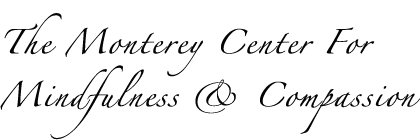Embodied Meditation: From Me to We
“Think of the breath as a whole-body process. It’s not just the air coming in and out of the lungs. It’s the flow of energy throughout the body, part of which is related to the flow of the blood and to the sense of aliveness in your nerves. Try to be sensitive to the whole body as you breathe in and breathe out.”
All musicians know that they have to tune up their own instruments before they can play with the rest of the orchestra. Every violinist knows s/he can't be part of the symphonic whole without first making sure all four strings are properly 'synced.'
Being with people compassionately is a lot like that. Compassionate presence is about moving from a separate sense of 'Me' to the relational space of We. In other words, we can't truly be present as a friends, partners, or even helpful listeners when the noise in our heads is disconnected from what's going on with us physically and emotionally. Or, as James Joyce put it, when we're living "just a short distance from" our bodies (The Dubliners).
Anne Klein, designer and visionary, may have foretold the benefits of embodied mindfulness practice with this quote:
“Our mind wanders incessantly, but our body and senses are always in the present. To investigate our embodied experience is to investigate the living present”.
Embodied mindfulness practice can help us tune up our own body-mind instrument, easing the stress that makes us feel separate from ourselves and others.
In an earlier blog entry (12/07/21), I described the "3 Sync" practice, which is key to cultivating presence within the relational field -- such as in one-on-one conversations, group meetings, peer consultations, support groups, supervision, and more.
And here's some good news: Practicing the 3 Sync meditation (or any embodied meditation practice) for just 1-3 minutes, a few times throughout the day, actually can be more beneficial than a solid 30-60 minutes of daily meditation. (Click here for a podcast about "neurolearning" that digs more deeply into the science behind this.)
When we ground in our own body by presencing our sensations and emotions, we calm the mind. And with a calmer mind, we can become more aware of ourselves and more aware of others.
Neuropsychologist Rick Hanson puts it this way: "When we are grounded in our own body, it makes room for the "we"." Being present with our own mind, body, and emotional states allows us to have more presence, empathy, and compassion in the relational field.
By contrast, anxiety has the opposite effect. Have you ever noticed the way anxiety mostly shows up in the upper body? When anxious thoughts hold the mind hostage in sticky rumination, often our head, neck, shoulders, and chest tense up at the same time. Simply by bringing mindful attention to our bodily experience, the 3 Sync practice of grounding in the body can help ease tension in the body, emotions, and mind.
And when we are able to fully arrive in this way, with embodied presence for ourselves and others, our response-ability becomes an act of generosity, kindness, and compassion.
For me, it helps knowing that I can do this practice throughout the day, taking only a minute or two to ground myself. And for those of us who wonder whether our work or home lives are leading to "burnout", a few minutes of this grounding practice can help to ease empathetic distress -- rather like bringing needed oxygen back to ourselves (remember how we have to do that first?).
If you'd like to explore this practice further, please check out an upcoming 1.5-hour, online workshop, scheduled July 18: Introduction to Embodied Meditation. For details click here, or go to the Mindfulness Classes tab on this website. We'd love to see you there.
